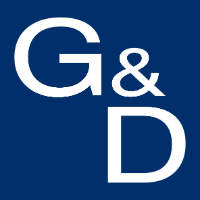KVM matrix systems make IT infrastructures highly flexible by allowing distributed access to a great number of computers.
To expand the limits of this infrastructure even further, G&D have developed the matrix grid to link systems even more directly. Not only does the matrix grid facilitate the operation of large installations, it allows for bidirectional operation at multiple locations.
Especially the installations stored at distributed locations to support decentralised processes now benefit from G&D’s matrix grid, which allows working across locations.
The matrix grid uses the features of the dynamic ports provided at G&D matrix switches. Each port can be used as input or output, and enables bidirectional communication. The ports are not only used to connect computers and consoles, but also serve to establish a connection between individual matrix switches, thus allowing access beyond individual matrices.
Until now, such connections could be already established via cascades. Unlike in classic cascades, which are still possible as an alternative, access from consoles to computers is no longer exclusively top-down in a tree structure. For this, the database structure in the matrix grid has changed substantially as it now virtually summarises a system of individual devices into one single, large matrix.
Versatile topologies become reality
This means from now on users are no longer limited to the classic cascade tree, but devices can be interconnected as desired depending on a given project. Here, G&D once again put the focus on the compatibility of their systems: All digital KVM matrix systems, ControlCenter-Digital and DVICenter, in all sizes between 16 and 288 ports, can be included in the matrix grid. And the database provides only a theoretical limit of a maximum of 24 matrices per grid.
Therefore, the G&D matrix grid allows for highly complex topologies to be set up in a variety of ways, for example, as strand, ring, star, or as a fully meshed network (or as a combination of these). Of course, this wide range of possibilities also challenges planners and integrators to select the optimal topology in each individual case. But no matter how challenging the task, the KVM experts from G&D are there to offer advice and their experience from 30 years of developing KVM.
Customers benefit from new possibilities
With the new matrix grid, customers are able to establish even larger installations, which they can use more flexibly, for example, distributed over several locations. Especially for critical applications a fully redundant topology provides further advantages in the availability of all systems connected. Now further failover concepts complement the mission-critical features already provided by G&D.
The matrix grid also pays off from the commercial side as large matrix installations can be set up to optimise the amount of required ports. Even expansions of existing systems offer potential for savings and easy ways to combine devices for adding fibre components on a broad basis to CAT-based systems, for example.
Users, however, don’t even realise the complexity of the installation. With the help of the G&D matrix grid, they basically operate one large system, and don’t have to spend a thought on its infrastructure. Yet, they benefit from even more flexibility and reliability. From their workplaces, users can access all computers connected to the grid, no matter how many.

